
China’s journey toward carbon neutrality took its first major step Friday as the country announced goals to slow emissions in the next five years.
The country plans to reduce carbon emissions per unit of gross domestic product by 18% through 2025, and energy use per unit of GDP by 13.5%, Premier Li Keqiang said Friday at the opening of the National People’s Congress. It also plans to boost non-fossil fuels to 20% of energy use by then, and will create an action plan this year to detail how it aims to reach peak emissions by 2030.
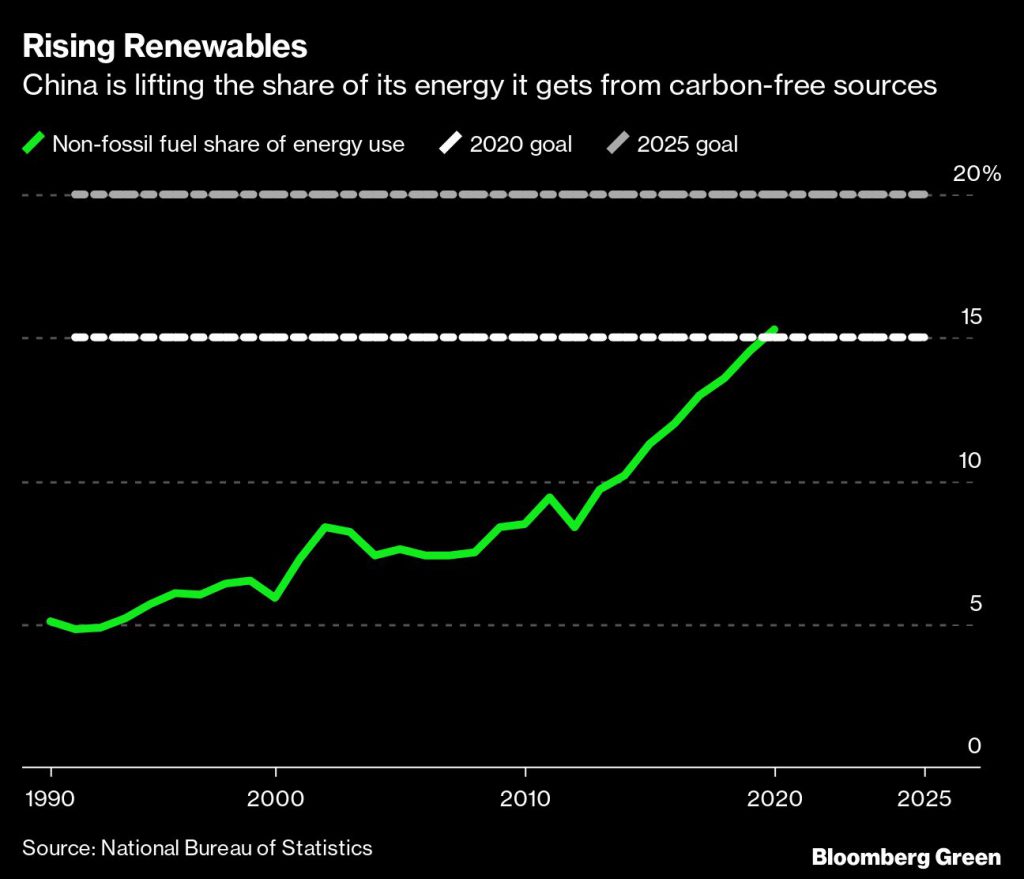
China’s coal industry group earlier this week said it plans to increase output by 2025
At the same time, China plans to continue increasing domestic production of fossil fuels like coal and oil to improve energy security, a key concern for the world’s largest importer of raw materials. And it plans to keep developing nuclear energy after failing to meet goals in the sector over the past five years.
Li’s speech and the country’s 14th five-year plan, covering 2021 through 2025, represent Beijing’s first strategic blueprint since September, when Xi Jinping set a goal of net-zero emissions by 2060.
Here’s how it could impact some key energy and climate sectors:
China started industrializing its economy more than a century after countries such as the US and the UK, so its energy consumption is still growing strong as others have peaked or plateaued. Beijing hasn’t wanted to slow growth by capping energy use, so has instead focused on using it more efficiently.
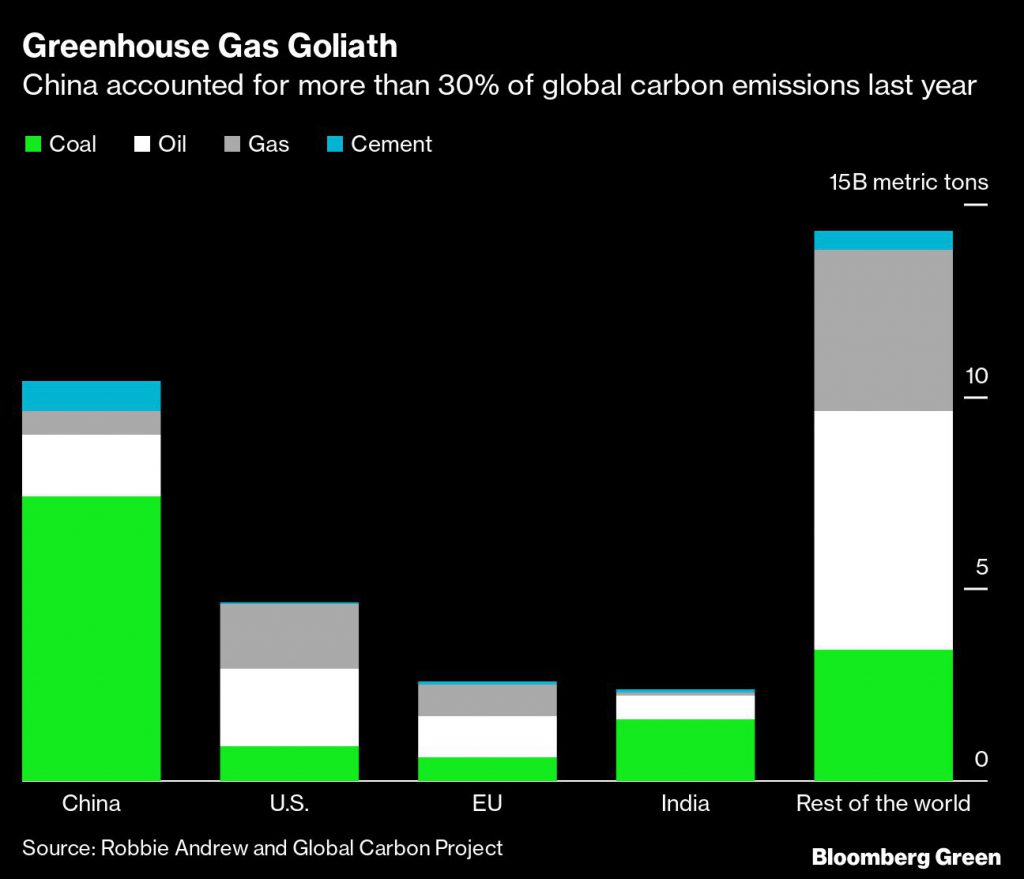
The new target of reducing energy use per unit of GDP by 13.5% is slightly lower than the 15% goal the country set out in its last 5-year plan. China outperformed that target, reducing energy intensity by about 18% in the 2016-2020 period. State Grid Corp. of China, the nation’s utility giant, earlier this week signaled a heightened focus on energy efficiency and demand-side reforms over the next five years, saying they represent a cheaper solution than adding new energy supply.
Much like energy use, China’s approach to emissions has been to reduce intensity instead of setting an overall target. The 18% reduction goal over the next five years is the same level it targeted and successfully reached in the last plan.
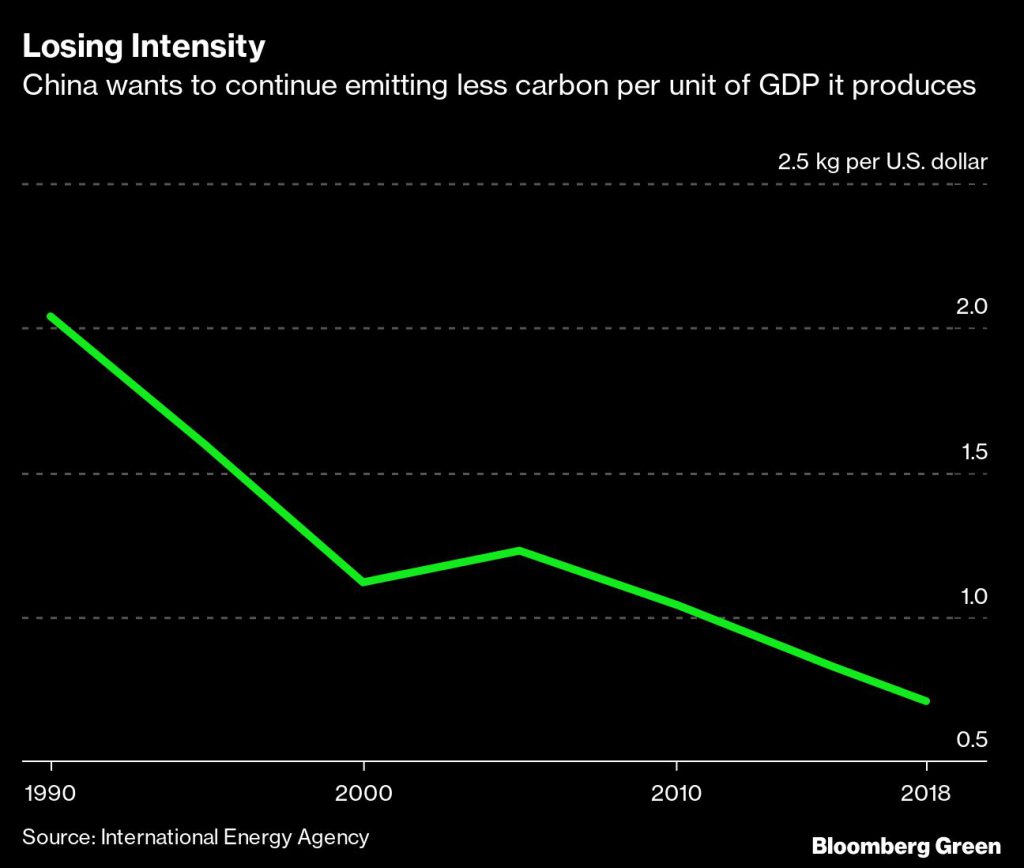
Still, as GDP continues to grow, emissions have also increased, and China spewed 9.8 billion tons of carbon in 2019, nearly 29% of the world’s total, according to BP data. Climate experts say China needs to set an absolute cap, with the Center for Research on Energy and Clean Air saying it needed to be 8.75 billion tons by 2025 to meet the linear path to 2060 carbon neutrality goal.
Coal is the most polluting fossil fuel, and China mines and burns half the world’s supply. Beijing in recent years has succeeded in reducing coal’s share of its energy mix, but that’s happened as total energy consumption has risen, meaning the amount of coal being burnt hasn’t changed much since the early 2010s.
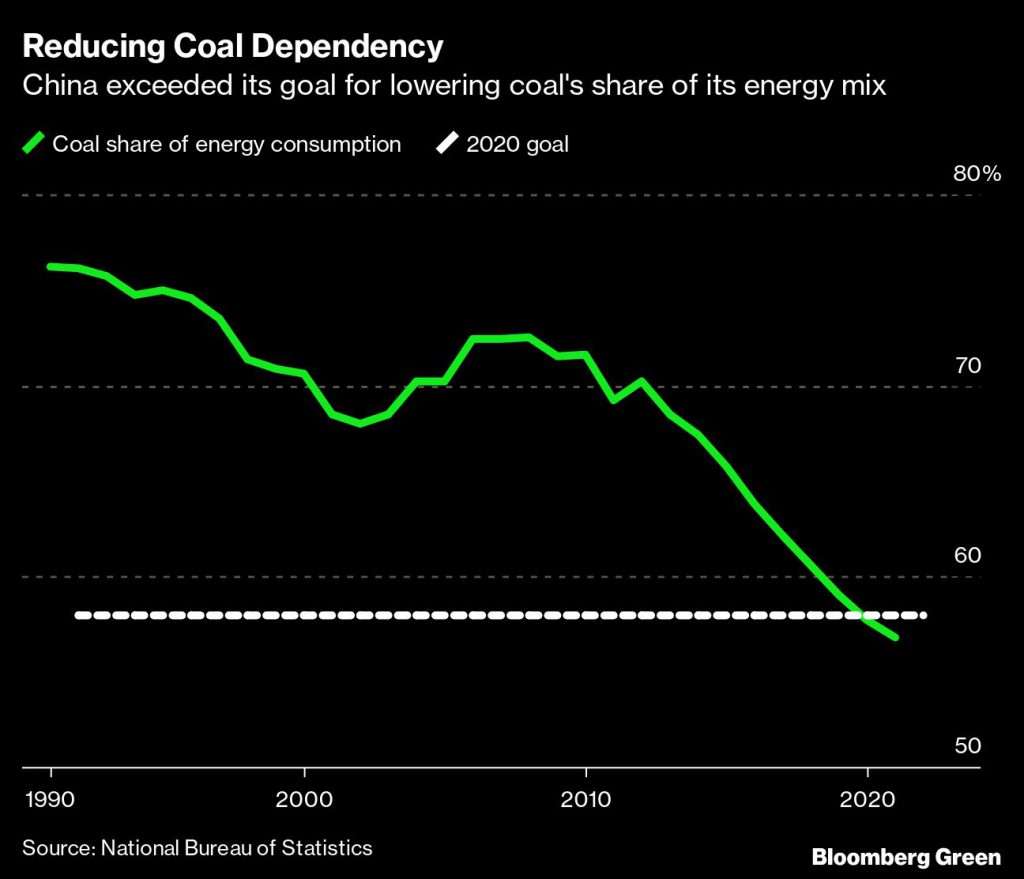
That trend is likely to continue in the next five-year plan. Li said China will continue to promote the clean and efficient use of the fuel while making a major push to develop new energy sources. And the country will keep building up production systems for coal, oil and gas. The country’s coal industry group earlier this week said it plans to increase output by 2025, and that total consumption will be slightly higher at the end of the period than it was in 2020.
China’s target for 20% of its energy needs to be met by non-fossil fuel sources by 2025 is faster than a previous goal of reaching that mark by 2030, and it illustrates the enormous success the country has had boosting installations of solar and wind capacity in recent years. The country will continue to “efficiently” develop those sources and promote hydrogen, pumped hydropower and energy storage in the next five years.
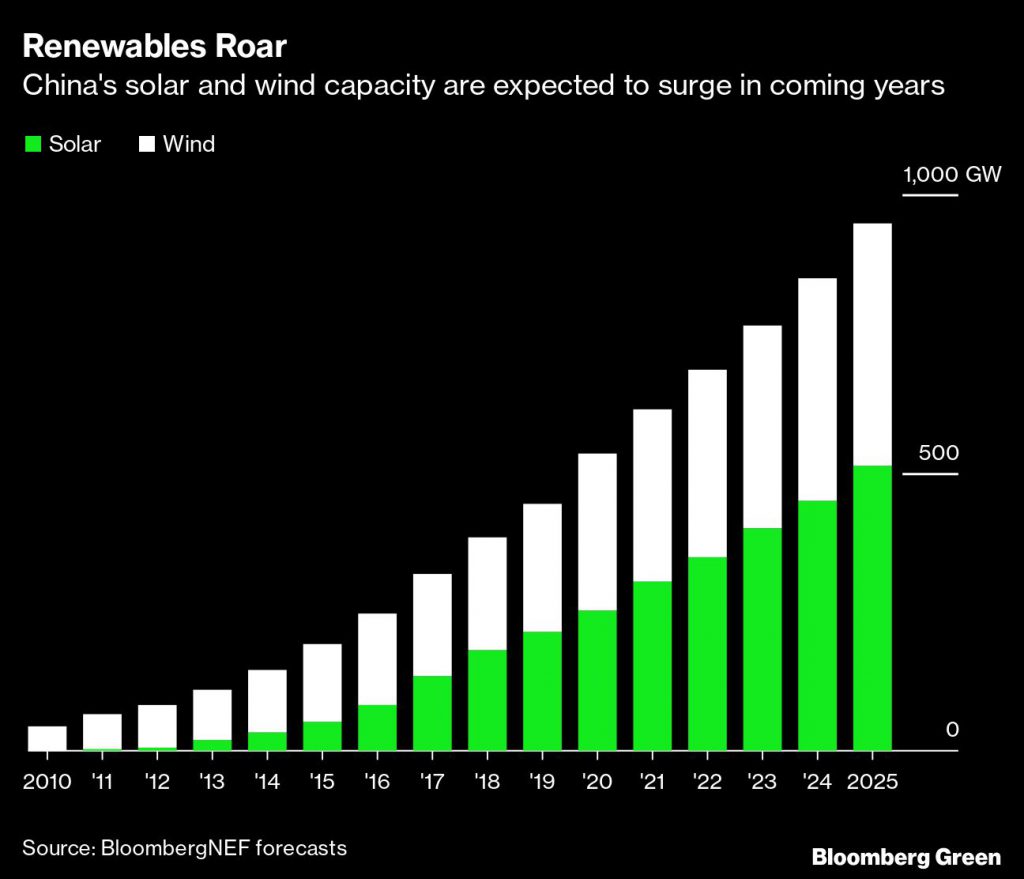
Li also reiterated China’s support for nuclear power, after it fell far short of its last 5-year plan target of having 58 gigawatts of plants by 2020, ending up with a little under 50 instead. For the next five years, the country plans to boost capacity of the atom-splitting energy by 40% to 70 gigawatts.
One of the main tenets of the green movement is to “electrify everything” in order to hook up more sectors to the fastest-growing sources of carbon-free energy, wind and solar power.
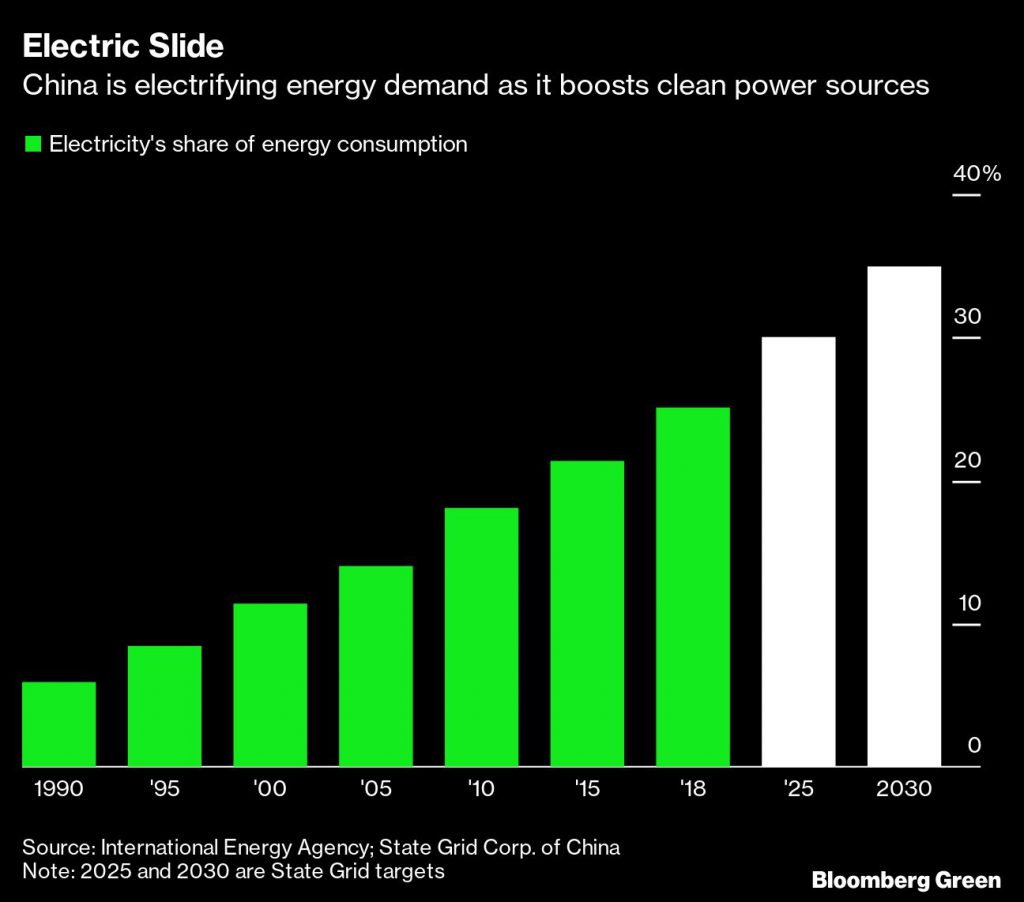
China is doing just that. Li said that increasing sources of electricity will be a goal over the next five years. Electricity represented about 25% of total energy use in 2018, according to the International Energy Agency, more than double the share in 2000. The country’s major utility says that percentage will rise to 30% by 2025 and 35% by 2030 as the nation expands its world-leading battery vehicle fleet.
Comments